 First Comics News: Mr. Kindzierski, you know, I thought I knew a fair amount about you. However, looking at and reading a lot of articles and information about you online, I began to realize that you are just everywhere – like, you seem to have every finger in a different pie!
First Comics News: Mr. Kindzierski, you know, I thought I knew a fair amount about you. However, looking at and reading a lot of articles and information about you online, I began to realize that you are just everywhere – like, you seem to have every finger in a different pie!
And what could be better than that?
You are an accomplished pen and ink artist, you do paintings, you’ve won several Comic Book Awards for your very innovative and dazzling use of colour on numerous comics projects – and you’re writing your own stories for comics, as well!
Younger comics readers perhaps won’t get this joke – but it’s like you’re a One Man Charlton-!
Firstly, is it alright to address you by your first name?
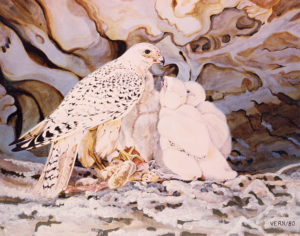 Lovern Kindzierski: Please, call me Lovern
Lovern Kindzierski: Please, call me Lovern
I’m very, very pleased to have the priviledge of chatting with you today!
I don’t usually start interviews this way, and I most certainly do not wish to embarrass you, Sir. But this one time, I’d like the Introduction to this interview be a series of quotes and point-form facts about you. Because I’m very impressed!
“Recognized by the Comic Buyer’s Guide survey as one of comics’ most influential colourists of all time.”
-Nominated several times as Best Colourist by both the Eisner and Harvey Awards!
” Won a Wizard Fan Award for his work in 1993 and 1994 as well as a Comic Buyer’s Fan Award in 1998.”
” Holds a Bachelor of Fine Arts Degree (Honours) and his paintings have been exhibited in solo and group exhibitions. ”
“After receiving his degree from the University of Manitob,a he worked as a courtroom sketch artist and contributed to animation on the Children’s Television Workshop, both as an employee of CBC (The Canadian Broadcasting System) Television. ”
“Co-founder of Digital Chameleom, which was Canada’s Premiere Art Studio.”
“Introduced computers to comic book production.”
1st: And there’s a lot more information about yourself and your achievements in the comic book field on your own website, and elsewhere, all over the internet.
I believe you were born and reside in Winnipeg, Canada. Is that right? If I may ask, when were you born, and what school or schools did you attend to perfect your artistic skills, including painting paintings, illustrating with pencils, ink pens and/or brushes, and in terms of the high level of skill you continue to display, in the comics medium?
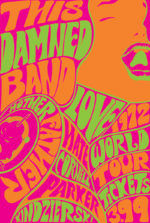 Lovern: I was born north of Winnipeg in the little town of Arborg in the municipality of Bifrost. Walt Simonson got a kick out of that little tidbit. My father encouraged my art early on by introducing me to comic books. One of my earliest memories is of me on the clothes stand trying to copy a Phantom cover. I didn’t get any other real art education until I left Arborg and attended Red River College in Winnipeg. I took and Advertising Art course there and went out to find a job. After about 6 years of spending my days as a printer and doing freelance in the evening I decided to go back to school and enrolled at the University of Manitoba in the Fine Art program. In my third year there I tried out for a position as George Freeman’s assistant. I had learned a lot about illustration in RRC and painting in the School of Art, but I really learned how to harness those skills under George’s tutelage.
Lovern: I was born north of Winnipeg in the little town of Arborg in the municipality of Bifrost. Walt Simonson got a kick out of that little tidbit. My father encouraged my art early on by introducing me to comic books. One of my earliest memories is of me on the clothes stand trying to copy a Phantom cover. I didn’t get any other real art education until I left Arborg and attended Red River College in Winnipeg. I took and Advertising Art course there and went out to find a job. After about 6 years of spending my days as a printer and doing freelance in the evening I decided to go back to school and enrolled at the University of Manitoba in the Fine Art program. In my third year there I tried out for a position as George Freeman’s assistant. I had learned a lot about illustration in RRC and painting in the School of Art, but I really learned how to harness those skills under George’s tutelage.
1st: Was your degree at the University of Manitoba an Arts Degree?
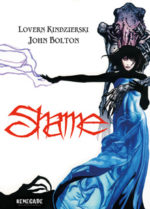 Lovern: I earned a Bachelor of Fine Art, Honours degree at the University of Manitoba.
Lovern: I earned a Bachelor of Fine Art, Honours degree at the University of Manitoba.
1st: I myself was born and grew up in the Halifax/-Dartmouth twin cities of Nova Scotia. So you and I are Countrymen.
How old would you say you were when you discovered comics, and when did you come to the realization that you wanted to work in the industry?
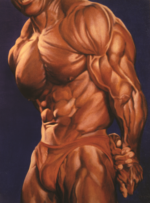 Lovern: My Father used to put me on his shoulders and hike of to the nearest spinner rack and get his weekly comic fix. Then he would hike back home, plop me down in his lap and read them to me. I was still at the age that eating the comics was still and option. I always wanted to be an artist. I remember reading about Chuck Schultz and how he worked when I was in junior high. I thought working as a strip artist like him or Foster would be perfect and I really thought I could do that.
Lovern: My Father used to put me on his shoulders and hike of to the nearest spinner rack and get his weekly comic fix. Then he would hike back home, plop me down in his lap and read them to me. I was still at the age that eating the comics was still and option. I always wanted to be an artist. I remember reading about Chuck Schultz and how he worked when I was in junior high. I thought working as a strip artist like him or Foster would be perfect and I really thought I could do that.
1st: I’ve read that you started your artistic career as a painter of paintings, and that a lot of your paintings have been exhibited in a lot of art galleries, prior to your making the decision to work in the comic book field – it turned out, as one of the most influential colourists in that field.
How did you get started in this business? And where did you go to school to perfect your painting, pencil and ink art, and your comics’ colourist skills? And, by that last one, I really mean (politely), this: it’s clear you weren’t content to do the job of just being a colourist in this industry.
Because you always seem to go way beyond the scope and skill level of what is required of a colourist in that field.
And the end result is your work just seems to leap right off the pages, moreso than that of so many others, although there are, of course, various other top notch talents in that aspect of the field.
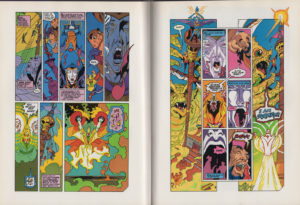 Lovern: Thank you, that is very generous. First off, I exhibited in a few galleries and anywhere else I could as a wildlife artist. At the same time I was taking fan art commissions out of some local comic stores. After I received my degree I worked as an animation cell painter, courtroom artist, colour assistant on Elric, and during the day I did paste-up and layout on several business magazines. If I hadn’t had the instruction I received in art school I don’t think I would have had those jobs. The university course in drawing and painting brought everything I had learned as a printer and in the few courses I took in college into sharp focus. Before I enrolled in the School of Art I had a life changing experience. I met one of my idols at a show at the Winnipeg Art Gallery. STERANKO! He was there on opening night to launch his show that the Graphic Narrative book by Fry and Poulos was based on. Jim and I were able to ditch the local stiffs/politicians and escape the show for a while. In those few hours he re-ignited my passion for comics. Shortly before that I had decided to become a full time wildlife artist and forget comics. The next day I showed him my portfolio and he gave me a really tough, but constructive review. A few months later I was taking my first year drawing and design courses. I always had in mind how to apply my skills to sequential art. In my thesis year I fought the school to do my thesis year in comic books. I had to fight for it, but I was able to get George Freeman as an none marking member of my thesis committee. George was tougher on me than Steranko and I am very grateful for that since I really needed it. After I graduated George gave me work as his assistant and I was able to put together a portfolio that I took to San Diego back in the days of the Civic Center conventions. I remember showing my inking samples to a DC editor who called another editor over. They both agreed that I inked like Joe Kubert. Then, before my head exploded, they told me I would never get any work as an inker. However, they both loved my colour samples and promised me work. My Batman Annual try-out lead to Hellblazer, Wasteland and a maxi-series that never finished called Sonic Disruptors.
Lovern: Thank you, that is very generous. First off, I exhibited in a few galleries and anywhere else I could as a wildlife artist. At the same time I was taking fan art commissions out of some local comic stores. After I received my degree I worked as an animation cell painter, courtroom artist, colour assistant on Elric, and during the day I did paste-up and layout on several business magazines. If I hadn’t had the instruction I received in art school I don’t think I would have had those jobs. The university course in drawing and painting brought everything I had learned as a printer and in the few courses I took in college into sharp focus. Before I enrolled in the School of Art I had a life changing experience. I met one of my idols at a show at the Winnipeg Art Gallery. STERANKO! He was there on opening night to launch his show that the Graphic Narrative book by Fry and Poulos was based on. Jim and I were able to ditch the local stiffs/politicians and escape the show for a while. In those few hours he re-ignited my passion for comics. Shortly before that I had decided to become a full time wildlife artist and forget comics. The next day I showed him my portfolio and he gave me a really tough, but constructive review. A few months later I was taking my first year drawing and design courses. I always had in mind how to apply my skills to sequential art. In my thesis year I fought the school to do my thesis year in comic books. I had to fight for it, but I was able to get George Freeman as an none marking member of my thesis committee. George was tougher on me than Steranko and I am very grateful for that since I really needed it. After I graduated George gave me work as his assistant and I was able to put together a portfolio that I took to San Diego back in the days of the Civic Center conventions. I remember showing my inking samples to a DC editor who called another editor over. They both agreed that I inked like Joe Kubert. Then, before my head exploded, they told me I would never get any work as an inker. However, they both loved my colour samples and promised me work. My Batman Annual try-out lead to Hellblazer, Wasteland and a maxi-series that never finished called Sonic Disruptors.
1st: Can you walk us through the process of what you do differently – how you go those many steps beyond the norm, in the colouring field?
Clearly, there is a major different between “just being a colourist – and in perfecting that talent to such a degree, that the images come alive!!
Your masterful talents at colouring comics projects seems to be….all about setting the mood.
Different moods for different types of stories, and even different ‘moods of colour’ for different moods of the same stories!
Looking at your colourist work on these projects just draws the reader right in!
For me, it’s the difference between perhaps reading a graphic novel, say, in three or four sittings, to – in your case, “I just cannot put this thing down, and go and eat!”
A lot of us just don’t know what is all involved, and I wonder what you can share with our readers about that colouring process?
Put another way, how does one build mood in a comics story….with colour?
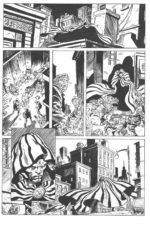 Lovern: Eek! Now I am really on the spot. I remember talking to Jason Pearson when he was on his first Body Bags series. I was feeling the weight of all those un-coloured pages ahead of him and he wanted some kind of insight to kick start his colour process. I told him that there were things on the page that he knew had to be a certain colour of tone. I told him I always start by filling those in and then the rest of the page would just fall in line. At this time we both were doing colour guides with marker to give to separators to follow. Now that stage of decisions takes place at the colour correction stage that happens after my flatters have set up my file. At that point I am setting up my planes and the mood. I want to make sure that all of the story elements are as clear as the story that the writer and artist want to tell is to the reader. That is when I am setting up the psychology of the page. After that I do a rendering stage where I add all of the lighting and effects.
Lovern: Eek! Now I am really on the spot. I remember talking to Jason Pearson when he was on his first Body Bags series. I was feeling the weight of all those un-coloured pages ahead of him and he wanted some kind of insight to kick start his colour process. I told him that there were things on the page that he knew had to be a certain colour of tone. I told him I always start by filling those in and then the rest of the page would just fall in line. At this time we both were doing colour guides with marker to give to separators to follow. Now that stage of decisions takes place at the colour correction stage that happens after my flatters have set up my file. At that point I am setting up my planes and the mood. I want to make sure that all of the story elements are as clear as the story that the writer and artist want to tell is to the reader. That is when I am setting up the psychology of the page. After that I do a rendering stage where I add all of the lighting and effects.
1st: Do you tend to enjoy working on your own projects moreso (like, for example, SHAME, or Agents of Law at Dark Horse), as opposed to other companies’ properties; like, for example, Batman, Wolverine, or Tarzan, which you did at Dark Horse Comics, leased from the Edgar Rice Burroughs’
estate. (?)
 Lovern: In a word, no. The story, whether it is Shame or Tarzan is what excites me. It doesn’t matter whether I own it or not. I had a whole lot of fun working on This Damned Band! There is always the matter of that “bucket list”. I am just a big a fan boy as any of the readers. Doing the colour on a Death story is thrilling because I am a fan of Neil’s work and Craig’s art, as well as really liking the character.
Lovern: In a word, no. The story, whether it is Shame or Tarzan is what excites me. It doesn’t matter whether I own it or not. I had a whole lot of fun working on This Damned Band! There is always the matter of that “bucket list”. I am just a big a fan boy as any of the readers. Doing the colour on a Death story is thrilling because I am a fan of Neil’s work and Craig’s art, as well as really liking the character.
1st: Were there any other members of your immediate family and/or more distant relatives, like cousins and so forth, who also had artistic or other creative types of skills, like yourself? I think what I’m trying to ask here, is – can skills like this run in a family, do you think, or no?
Are creative artistic skills and talents in the blood, so to speak (genetic), or are these things skills that can simply be learned, and learned well?
Do you have any theories on that?
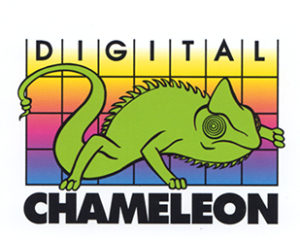 Lovern: My Father was really good with signage. He designed and painted the logo on the trucks in the family cartage business. I had an aunt would did some nice fashion drawings. I think that some people are really gifted, but I also believe that you can learn a lot of the skills you need to be an artist. I have seen it in my students. They don’t realize how to make the marks and when they do their artwork jumps a stage in their evolution as artists. However, there are people whose eye sees so much more and don’t have anything inhibiting their hand putting those visions on a page.
Lovern: My Father was really good with signage. He designed and painted the logo on the trucks in the family cartage business. I had an aunt would did some nice fashion drawings. I think that some people are really gifted, but I also believe that you can learn a lot of the skills you need to be an artist. I have seen it in my students. They don’t realize how to make the marks and when they do their artwork jumps a stage in their evolution as artists. However, there are people whose eye sees so much more and don’t have anything inhibiting their hand putting those visions on a page.
1st: I’ve read that you have mentored many new artists, also.
How did you come to start doing that, and what would you say have been the take-aways from some or many of these new artists, learning from you, from that experience?
Because let’s face it: many people can be creative, and many more people out there – cannot be.
But you, you are a very accomplished colourist (you’ve won many awards at it); you are an artist, a painter, and a writer, in addition.
And by your mentoring other, newer artists, you’re a teacher, at teaching these crafts to others.
And/or teaching them to perfect existing skills.
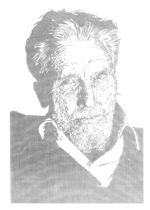 Lovern: One of the very serious messages I had from George was that I was to pay forward what he was teaching me. I sat in on the portfolio reviews that George was always doing for local artists. After a while I was adding my opinion to the review. After that I was doing my own reviews. When Digital Chameleon opened its doors I was sitting down with artists to discover who could work for us. I had learned to spot real solid talent from sitting in on George’s reviews and it was essential to building the talent pool that made Chameleon the force that it was.
Lovern: One of the very serious messages I had from George was that I was to pay forward what he was teaching me. I sat in on the portfolio reviews that George was always doing for local artists. After a while I was adding my opinion to the review. After that I was doing my own reviews. When Digital Chameleon opened its doors I was sitting down with artists to discover who could work for us. I had learned to spot real solid talent from sitting in on George’s reviews and it was essential to building the talent pool that made Chameleon the force that it was.
1st: And do you teach to each new artist’s strengths, their weaknesses, or to both?
Lovern: You have to teach both. As an artist you have to be able to bring your strengths to your weaknesses. Your style grows out of that interaction.
1st: And on that same topic, do you see some of these talented, but newer artists that you mentor, making the same mistakes of learning to draw, and draw well, and do you see the same mistakes of these newer artists – who some or many of them may be very skilled artists, to begin with — but can their learning to draw ( in particular), in the format of illustrative comic book panel-ology….can that initially be….a problem for them to learn drawing in that format?
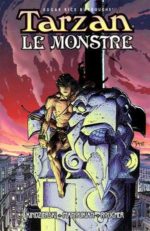
Lovern: Yes, of course. We had artist who had great knowledge of anatomy or colour who could not take that genius off the canvas and put it on a comic book page. Some of them went on to have great careers in the fine arts world. I am glad they didn’t twist themselves in knots trying to do something they really didn’t need to pursue.
1st: Which types of colouring, illustrative, and writing projects get you the most fired up, the most excited to be heading out to work to, when you get up in the morning?
And do you often work at these skills in bullpen-type settings, or at home?
Lovern: I think the parallel is strong between collectors and artists, or with myself. The collector is the most fired up about his latest treasure and I am always fired up by a new project. I work at home alone these days, but when I started working with George it was the two of us in the studio often from dusk until dawn. In the early days of Chameleon Christopher and I were chained to the tablets 120 hours a week. We would wind down sometimes by driving out to the airport and dropping a bag of quarters in the video arcade there at 4:00 AM. The we could grab something to eat there and go home to sleep. It was the airport because that was the only place we could get decent food that late.
1st: How many hours do you put into a typical work day, in this these fields?
Lovern: These days I try to keep it down to 8 hours, but I don’t always succeed. The odd thing about writing is that it never stops. It is a 24/7 kind of process that is always running, whether it is in the back of my mind or not. I worked out the plot for the second book in the second Shame trilogy and all of it twists and turns while I was recovering from surgery in the hospital. I was in that twilight realm trying unsuccessfully to find a comfortable position on one of those slabs they call beds in recovery. My mind wandered to a plot element and then I was breaking things down for each of the characters progress throughout the story. I ended up with all of the ideas tumbling over each other in my mind when suddenly I saw each one as a separate path. After that I was able to untangle them like a knot and lay them out to the obvious conclusion.
1st: In 1991, you were one of several co-founders of Digital Chameleon, including also Christopher Chuckry (President), (You were Vice-President and Digital Chameleon’s Creative Director, later becoming President of this firm). The Colorists there were yourself, of course, Laurie E. Smith, George Freeman (of Captain Canuck), Bernie Mireault, and Carla Feeney.
Digital Chameleon was nominated by The Comics Buyers Guide for the Favourite Colourist Awards in both 1997 and 1998 (both while you were on board), and also in 1999, 2000,2001, and 2003. This information is, of course, on the internet.
Clearly, Digital Chameleon was a going concern, and in all the RIGHT ways! May I ask, Why did the company close down in 2003? They most certainly seemed to be doing everything right!
Lovern: The company was sold out from underneath me by the investors after Christopher had been forced out. I cannot even get into the labyrinth of double dealing that went on then. I’ve been told it would make a great, if depressing, documentary.
1st: E.R.B’s Tarzan has always been one of my favourite literary characters. And, I’ve read online that Tarzan was a favourite of your father’s, as well. Your writing of Tarzan, at Dark Horse, was enormously entertaining. Is Tarzan one of your favourite characters, as well? Also, which are some of your other favourite characters, in any type of entertainment, genre, and publishing form — meaning, novels, comics, film….?
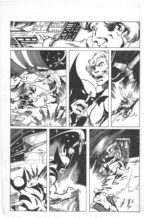 Lovern: I do love the ape man. I’m glad you enjoyed Le Monstre. I have been very lucky to have worked on many of my favourites. Elric ushered me into the industry. I wrote a Spiderman short story. I’ve coloured Batman. It would probably be easier to list some of the writers I enjoy, than to list all the characters I like. Just off the top; John Varley, Philip Jose Farmer, Roger Zelazny, Michael Moorcock, William Gibson, Anne Rice, Alan Moore, Neil Gaiman, Clive Barker, Robert E. Howard, Steven Erikson.
Lovern: I do love the ape man. I’m glad you enjoyed Le Monstre. I have been very lucky to have worked on many of my favourites. Elric ushered me into the industry. I wrote a Spiderman short story. I’ve coloured Batman. It would probably be easier to list some of the writers I enjoy, than to list all the characters I like. Just off the top; John Varley, Philip Jose Farmer, Roger Zelazny, Michael Moorcock, William Gibson, Anne Rice, Alan Moore, Neil Gaiman, Clive Barker, Robert E. Howard, Steven Erikson.
1st: Some years ago, I was very delighted to have the chance to chat with – at length – and interview fellow Canadian, and another enormously talented comics’ professional, Claude St. Aubin. Among other things, like George Freeman (yet another fellow Canadian), Mr. St. Aubin he did dazzling work on Captain Canuck, among many other projects. But St. Aubin also illustrated a series for Penny Farthing Productions’ entitled The Victorian, which to me, was amazing! And you wrote it! How on Earth did you manage to come up with such a story?
Lovern: I didn’t come up with the Victorian. I was hired by Penny Farthing for the creator, Trainor Houghton, to write the comic for him as he was tied up on a film development deal. I worked from Trainor’s plot, but I injected as much flavour as I could into Laszlo and the others. I wrote a prequel one shot of one of his early adventures, but that hasn’t been published. I had to get a working knowledge of Cajun to write that book and I even made some pilgrimages to New Orleans to get the feel of the place.
1st: Where do most of your synopsis’ for stories come from? And what things influence you to create such original ideas for stories?
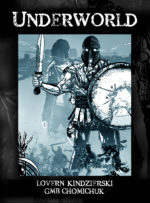 Lovern: I remember reading that Howard felt that Conan was with him when he wrote his stories. I certainly don’t claim to anything like that. My idea for Shame came to me while I was driving and was going to make up a story to entertain my passenger. I started to relate a Wally Wood Short called The Curse, but as I started I changed my mind and told her the story that just started unfolding in my mind. That is how Shame was born. When I had the idea for Underworld I was thinking of a special project for my screenwriting course. At the time I was also studying classical mythology and was going through a separation. Odysseus was in the front of mine and I started to see parallels between him and myself. I followed the path of those connections and soon I could see how the Odyssey could happen today and in my home town.
Lovern: I remember reading that Howard felt that Conan was with him when he wrote his stories. I certainly don’t claim to anything like that. My idea for Shame came to me while I was driving and was going to make up a story to entertain my passenger. I started to relate a Wally Wood Short called The Curse, but as I started I changed my mind and told her the story that just started unfolding in my mind. That is how Shame was born. When I had the idea for Underworld I was thinking of a special project for my screenwriting course. At the time I was also studying classical mythology and was going through a separation. Odysseus was in the front of mine and I started to see parallels between him and myself. I followed the path of those connections and soon I could see how the Odyssey could happen today and in my home town.
I find that stories just hatch full born in my mind. Usually I will be pondering a what if and the connections will happen and the idea presents itself in my mind. It will slowly reveal it self more to me as I think about it and my brain chemistry washes me along on a wave of the idea. After that I have to chunk out the plot and as I do that the details reveal themselves. When I decide to commit the idea to paper I make my decisions about where to begin and how relate the tale to an audience.
